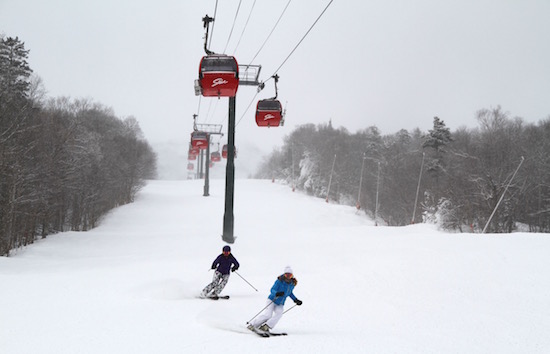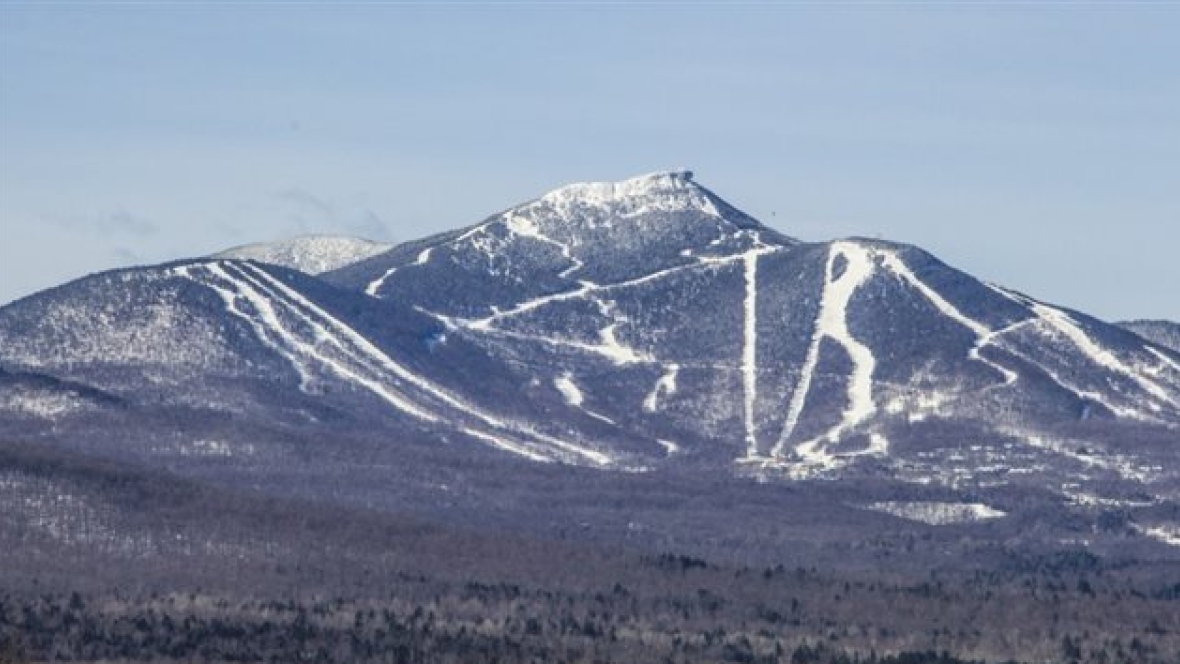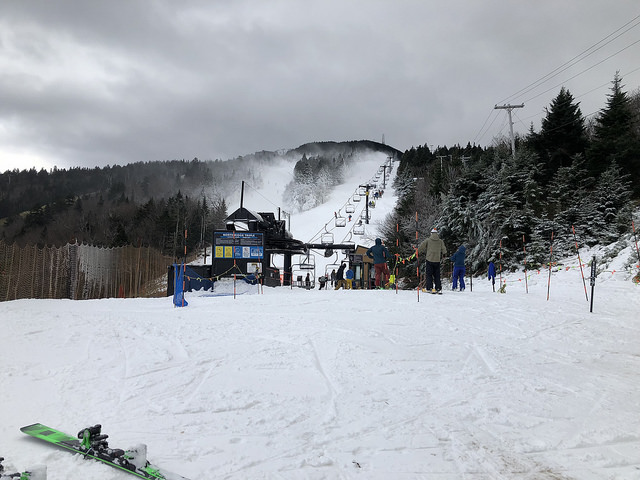There’s no denying it’s been a tough winter here in the East. Snow depth hasn’t been anywhere close to last year’s, some of the smaller resorts haven’t opened at all, and conditions have often been sketchy, at best. For a sense of the misery this is inflicting on eastern Ski Divas (me, included), check out the East Coast Whine thread on TheSkiDiva forum.
That said, I recently skied Stowe Mountain Resort, and I’m glad to report it was quite good. Why? Well, a few inches of natural snow certainly helped. But even without this happy dusting, the mountain has managed to keep skiers pretty well satisfied all season long, thanks largely to its state-of-the-art snowmaking ability.
This year’s warm weather and lack of snow have made snowmaking more critical than usual at Stowe. According to Scott Reeves, the mountain’s vice president of operations, snow depth at the top of Mount Mansfield is currently only about 24 inches. “To put that in perspective,” he said, “we generally record anywhere between 250 and 300 inches at the summit. We’re not even close to that, and there’s no way we’re going to make it up. Terrain with snowmaking has been king this year. That’s what’s been open since day one. Our natural terrain has been fluctuating.”
Stowe has invested heavily in its snowmaking operation, spending $10.5 million over the the past three years. This includes 600 HKD air/water energy efficient tower snow guns, 150 Ratnik air/water energy efficient land frame snow guns, 36 fan tower snow guns, and a new booster pump house. The mountain has doubled its water pumping capacity from 1,500 to 3,000 gpm (gallons per minute), added snowmaking to five trails, and replaced snowmaking pipe on 22 other trails. It’s also installed a state-of-the-art snowmaking control center that automates much of its snowmaking operation. By merely clicking a mouse, an operator can remotely start and stop guns at various locations and cause them to oscillate or rotate. The system also measures humidity, temperature and wind, and uses the data to adjust the amount of water and air needed to produce the desired quality snow. Thanks to the new technology and a 110-million-gallon reservoir, the resort can cover 56 acres in a foot of snow in only 24 hours.
Despite this, the human touch is still important. Scott and his staff meet every morning at 11 to access snow conditions and evaluate weather forecasts. The staff also goes out on the snow each day to check snow quality. “I ski almost every day and my assistant skis every day,” said Scott,”so we’re constantly checking the quality of the snow. Even though the computer tells us we’re making dry snow, there’s no substitute for getting out on it ourselves.”
How does Stowe decide where and when to make snow? “It’s pretty much based on market demand,” Scott said. “For opening week, we want a good mixture of intermediate and expert terrain, because that’s when our season passholder base starts up. As we get toward Thanksgiving, we begin thinking about terrain for families and beginners, so we expand snowmaking to what’s more suited for them. Certainly, in a normal season, we want 100% of our snowmaking terrain open by the December holiday. After that, we focus on quality and what we need in order to get to closing day.” As for the rest of the season, Scott says the mountain has been making snow like crazy for the past two weeks to achieve what he calls their “spring depths.” “Our scheduled closing is April 24,” he said. “I feel very confident that if we have a normal spring, we’ll make that date.”
Stowe isn’t the only Vermont ski area where snowmaking plays an important role. More than 80 percent of the trails in the state are covered by snowmaking. That’s the most of any state in the union by far, 20 percent more than New Hampshire, and way more than any ski area out West. In the past few years, the state’s ski areas have participated in a program with Efficiency Vermont that’s provided rebates for purchasing newer, more energy efficient snowmaking equipment. Thanks to this partnership, Stowe has been able to eliminate the diesel compressors it previously used for its snowmaking operations, saving the resort 100,000 gallons of fuel per year and greatly improving its carbon footprint. Scott also noted that the partnership has allowed the resort to make its computer control system more efficient, as well as help purchase more energy efficient snow guns. “Basically, for every gun we used to run we can now run three.” he said. “That helps us put snow out there faster and increases our snowmaking capability.”
Stowe’s snowmaking has brought it national recognition, too. In 2014, Outside Magazine awarded the resort its 2014 Ski-Season Travel Award for Best Backup Plan because of its (then) two-year spending spree on snowmaking. The magazine highlighted Stowe as spending “more than any other resort in the East,” and praised its ability to work “more efficiently even in temperatures up to 28 degrees.”
So thank your local snowmaker, especially here in the East. Without them, we might not be skiing at all this year.





